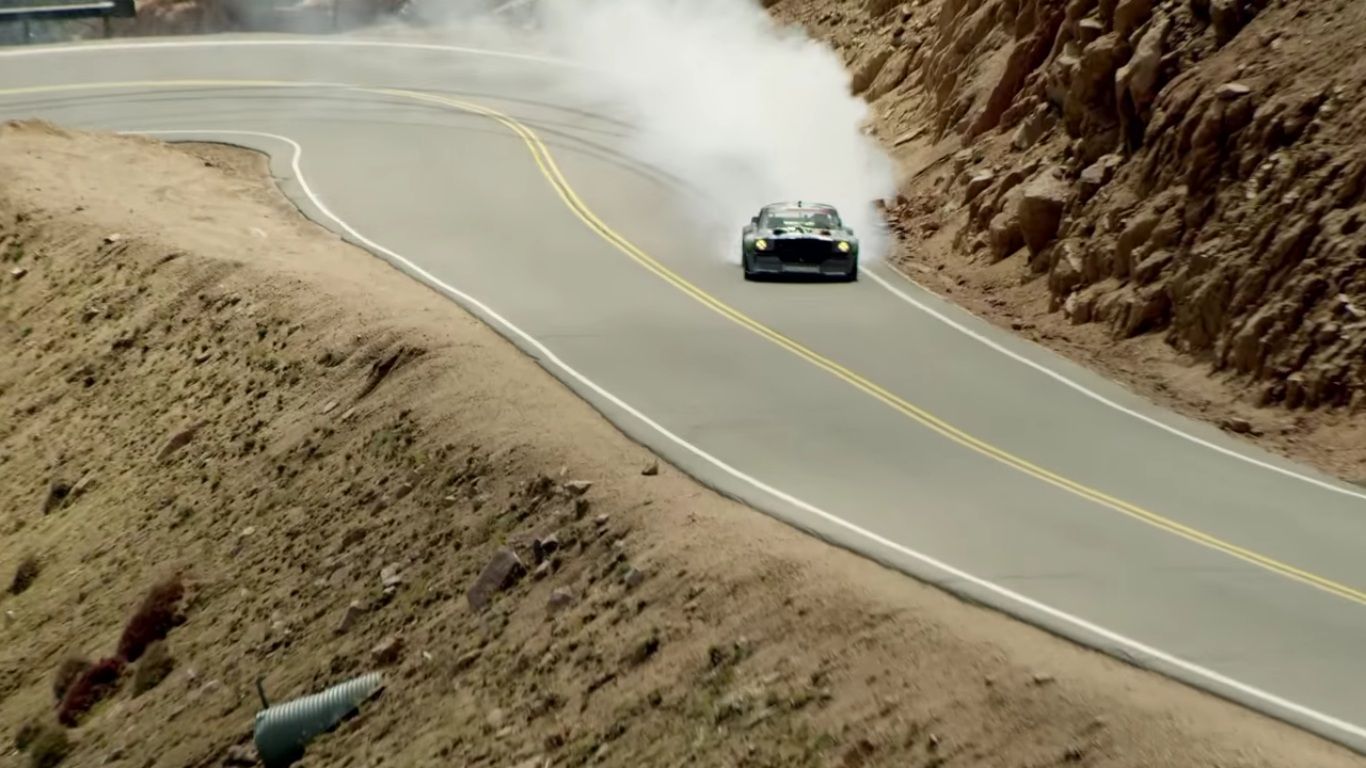Last week, we announced the arrival of the Hoonicorn V2, a flame-throwing, methanol-guzzling, twin-turbo destroyer-of-rubber capable of producing 1,400 horsepower and worldwide face melting. It’s an upgrade over the old naturally aspirated Hoonicorn from Gymkhana Seven, which left us wondering why the hell Mr. Block would need an extra 555 ponies force fed into the already absurdly powerful 6.7-liter Roush Yates V-8. I speculated it had something to do with “spinning all four at 140 mph across some far-flung mountain top.” Turns out I wasn’t far off the mark.
While 140 mph might be pushing it, the rest of my theory is true, as it was recently announced the next installment of the Gymkhana series would take place on America’s Mountain, a.k.a., Pikes Peak, located in Colorado. Suddenly, that new stars-‘n-stripes livery seems more than appropriate.
So does all that turbo power. You see, Pikes Peak is basically at the edge of space, with the tippy top reaching more than 14,000 feet above sea level. At that elevation, the air is thinner than a sheet of paper on a diet, and internal combustion struggles.
I don’t think that’ll be an issue here, though. The Hoonicorn V2 employs two Garrett turbos pumping out a combined 21 psi of boost, which should keep the smoke a’comin all the way to the finish line.
Look for “Climbkhana” to drop next summer. In the meantime, check out the teaser video above.
Continue reading for the full story.
Why It Matters
I’m glad the Gymkhana series is moving on to new territory. Not that I don’t like seeing all the craziness go down in urban environments like Los Angeles, San Francisco, Dubai, etc., it’s just sometimes you gotta switch it up to keep things fresh.
Taking a crack at Pikes Peak is a fantastic idea. Not only is the mountain dripping with natural beauty and spectacular views, but it bears a good bit of competition prestige as well.
In case you were unaware, Pikes Peak plays host to an annual hill climb racing event that attracts top teams and drivers from across the world. The route is highly technical and very dangerous, a 12.42-mile run of hairpins and deadly drops. The full course has 156 corners, and climbs 4,720 feet over gradients averaging 7.2 percent.
All that extra elevation can equate to a 30-percent power drop between the start and finish line, which makes forced induction critical for sustained performance. Electric motivation is also popular.
But it’s not just the engine that struggles at high elevation – aerodynamics also see a decrease in efficacy, as does driver performance.
Will Block have what it takes to one-up himself with this next slide-fest video? Well, with the Hoonicorn V2 underneath him and the stunning Colorado landscape at his back, I think there’s a pretty good chance.

